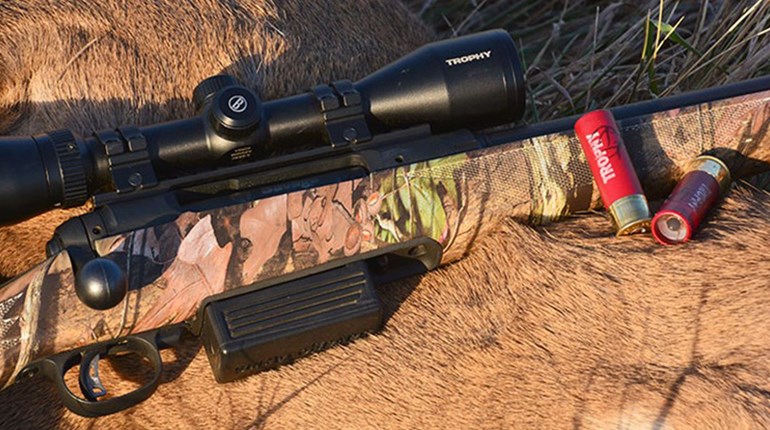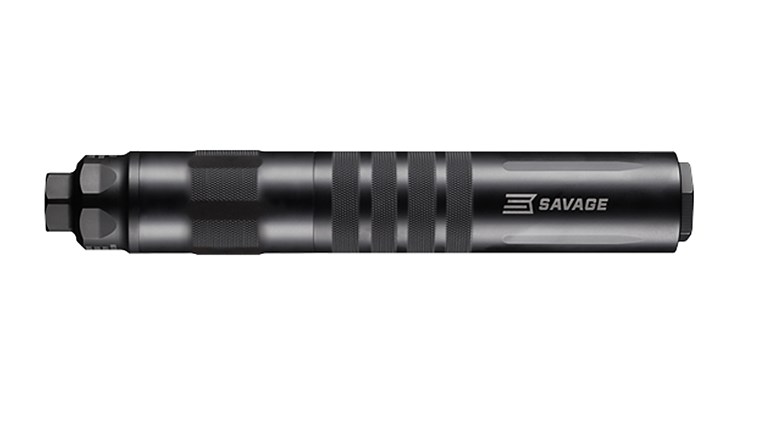
Turkeys. I'm old enough to remember when the New York season opened up, and to have seen the turkey guns and gear evolve from Grandpa’s blunderbuss to the efficient designs of today; the guns have definitely gotten shorter and the shotshells have come a very long way from a standard load of No. 4 lead shot.
I had the privilege of sharing this new hunting season with both my Dad and my maternal grandfather; and the memories—and mistakes—we all made are irreplaceable in my mind. We all started out with whatever gun we owned; it was, more often than not, a gun that had been repurposed from our waterfowl and/or upland game seasons, and we made do, with varying levels of success. In the early days, the principal of a long barrel with a fixed, full choke held weight; today, all that has changed. My first turkey gun, a gun that still gets used to this day, was a Remington 870 Express 12 gauge, and while that gun has taken a good number of birds, it never really fit me well, and is cumbersome to carry in the thick woods.
 I happened upon the Stevens Model 320 almost by accident. It was on display at the SHOT Show, and I immediately noted the compact design—perfect for the thick spring woods that I hunt. It had everything I was looking for in a new turkey gun: camo pattern stock, fiber optic sights, short barrel, tight choke. Upon picking it up, it felt immediately familiar, and I thought I recognized the conformation. Yes, indeed, it felt very much like a Winchester 1300 pump gun I’d spent time with as a younger man. The safety and slide release are in the same location as the 1300, and the rotary bolt seems to be very close, if not identical to the Winchester design. This, in all sincerity, is not a bad thing.
I happened upon the Stevens Model 320 almost by accident. It was on display at the SHOT Show, and I immediately noted the compact design—perfect for the thick spring woods that I hunt. It had everything I was looking for in a new turkey gun: camo pattern stock, fiber optic sights, short barrel, tight choke. Upon picking it up, it felt immediately familiar, and I thought I recognized the conformation. Yes, indeed, it felt very much like a Winchester 1300 pump gun I’d spent time with as a younger man. The safety and slide release are in the same location as the 1300, and the rotary bolt seems to be very close, if not identical to the Winchester design. This, in all sincerity, is not a bad thing.
Having an MSRP of $269, the Stevens Model 320 has enough to get the user to get past the Chinese origin. Dual slide bars, a decent trigger, and a stock that not only fits well but handles the recoil of the big 3-inch magnum turkey shells all give credence to the design; and I even like the color. Covered in Mossy Oak Obsession camouflage, and with metal parts covered in a flat black finish, the Stevens 320 will not be the cause of a turkey noticing you; and I appreciate the fact that the gun comes with sling swivel studs for ease of carrying once you’ve got a bird over your shoulder, which you invariably will with this gun.
Like the Winchester version, the cross-bolt safety is located on the muzzle end of the trigger guard. While I most definitely prefer a tang safety, the positive feel of the Stevens safety keep the shooter’s finger away from the trigger while switching to the fire position—as opposed to the Remington design—which is a good thing in my book. The slide release, located at the left base of the receiver just behind the trigger guard, allows the shooter to easily access the chamber with a slight twist of the gun, and depressing the button with the right thumb, working the slide with the left hand. The 320 had a good balance as well; some of the turkey guns I've held over the shot very well but balanced like a scrap piece of 2x4. Not so with the Stevens 320.
At the bench, the Stevens 320 showed its value, and showed it well. I grabbed a few different types of ammunition, from traditional 2¾-inch lead shot, to the more advanced types of 3” magnum turkey loads. Winchester’s Long Beard and Federal’s 3rd Degree were among the mix, and all worked acceptably, but far-and-away the Federal 3rd Degree loads were stellar. Increasing the distances on our targets all the way out to an honest 45 yards, I saw results that would guarantee a kill. The screw-in extra-full choke kept the pattern tight, in spite of the short barrel, and I immediately gained all sorts of confidence in this gun. Even with the heavier 3-inch loads, recoil was more than manageable, and muzzle jump was not bad at all. The green fiber-optic front bead, situated atop the ventilated rib, allowed for precise shot placement, aligning quickly with the targets. Both loading and extraction were flawless, irrespective of length or power level, and I could immediately see how the Stevens 320 could make for a great home-defense gun. It’s drilled and tapped for scope mounting—the Weaver Kaspa turkey scope, with a dedicated reticle, would make a fantastic mate to this gun—so the optics option is most definitely on the menu.
As a younger man, the concept of having a dedicated turkey gun was as foreign as owning a shotgun for pterodactyls. That is most definitely not the case anymore, and this Stevens 320 will be afield with me for years to come. Perhaps the best field test of the Stevens Model 320 was the opening day of the New York turkey season, when I put the gun in the hands of Manny Vermilyea, a young man who has an affinity for both firearms and hunting, who had yet to make his bones in the turkey world. At ten minutes past six, with two toms just 38 yards across an open field, Manny showed exactly how viable the Stevens 320 is; one load of Federal’s 3rd Degree made a turkey hunter out of the youngster, and added one more notch to my own calling skills. That smile on his face made it all worthwhile to me.






































